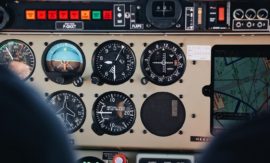Intended learning outcomes: Describe the data collected after the completion of an operation. Identify demonstrated capacity and downtime.
Among the data that are printed on an operation card are
- Order ID and order position
- ID of the assigned work center
- ID of the assigned machine or tool
- Quantity to be processed
- Standard setup load
- Standard run load
- If needed, the quantity to be produced in a unit that differs from the one on the order. For example, orders may be for pieces, but production is in meters (for sheet metal trimming, for example). The necessary conversion factor is an attribute of the operation object.
If the execution matches the standard, the only recorded fact is the execution of the operation. By collecting the number of finished items and the number of produced scrap items, rated capacity can be compared with demonstrated capacity.
Demonstrated capacity is proven capacity calculated from actual performance data, usually expressed as the average number of items produced by the standard load hours per item ([ASCM22]).
Furthermore, actual operationload, measured in capacity units, can be collected, as well as effective times. Standard operation time can then be compared with actual operation time. In addition, downtime might be of interest:
Downtime is time when a resource is scheduled for operation but is not producing for reasons such as maintenance, repair, or setup ([ASCM22]).
For statistical and accounting purposes, the ID of the worker goes on record. In multiperson servicing, various operation cards are recorded, all referring to the same operation. If the work center or other planning data change during the execution of the job, the altered data must be registered. The order ID is also recorded for every unplanned executed operation.
Also conceivable is a separate recording of the actual quantities and the fact that the operation was completed. This may be necessary because of the legal situation (labor unions). In this case, recording includes only the number of produced items (good items and scrap) on the operation card. Separate collection documents then keep note of the actual loads. These summarize the activity of the personnel along with their other activities (training, illness, vacation, and so on).
Course section 15.3: Subsections and their intended learning outcomes

15.3 Order Monitoring and Shop Floor Data Collection
Intended learning outcomes: Describe recording issues of goods from stock and completed operations. Produce an overview on progress checking, quality control, report of order termination, and automatic and rough-cut data collection.

15.3.1 Recording Issues of Goods from Stock and the Backflush Technique
Intended learning outcomes: Differentiate between unplanned issuances and planned issuances. Produce an overview on backflush technique and critical point backflush technique.

15.3.2 Recording Completed Operations, and the Demonstrated Capacity
Intended learning outcomes: Describe the data collected after the completion of an operation. Identify demonstrated capacity and downtime.

15.3.3 Progress Checking, Quality Control, and Report of Order Termination
Intended learning outcomes: Produce an overview on progress checking, quality control and the quality control sheet. Identify the anticipated delay report and the order termination report.

15.3.4 Automatic Data Collection and Rough-Cut Data Collection
Intended learning outcomes: Produce an overview on Automatic identification and data capture (AIDC), bar codes, RFID. Describe the principle and issues of rough-cut data collection.
